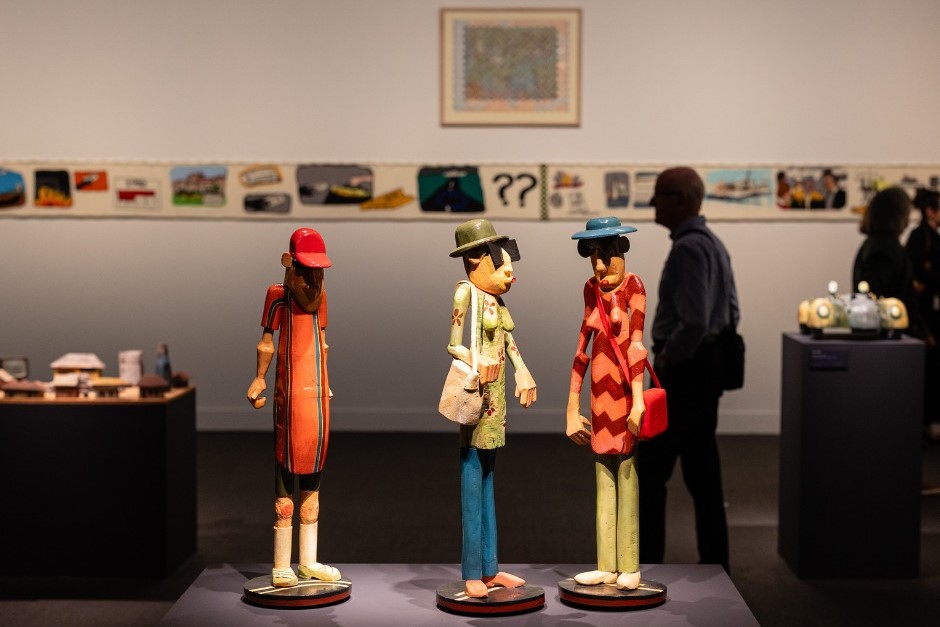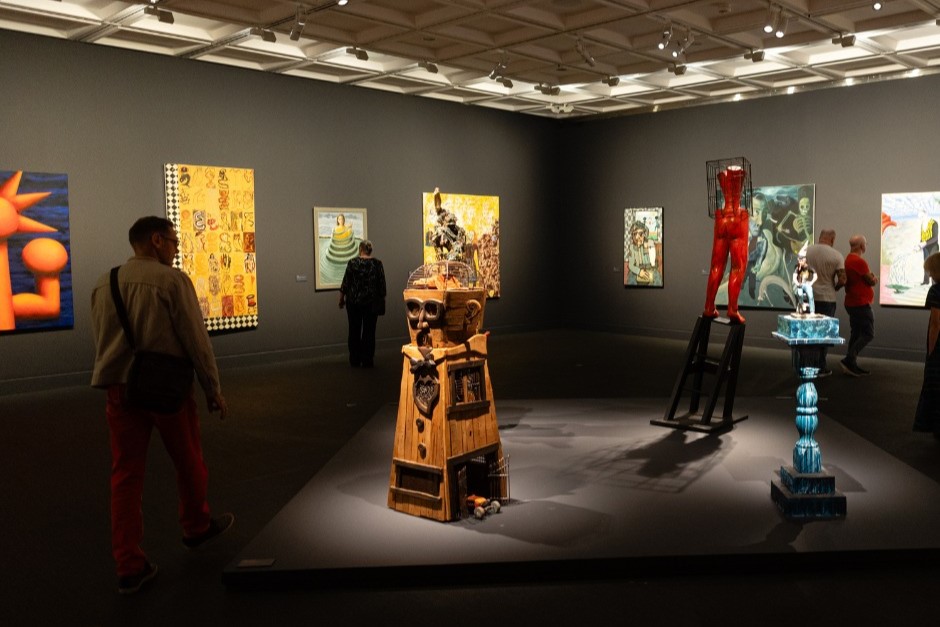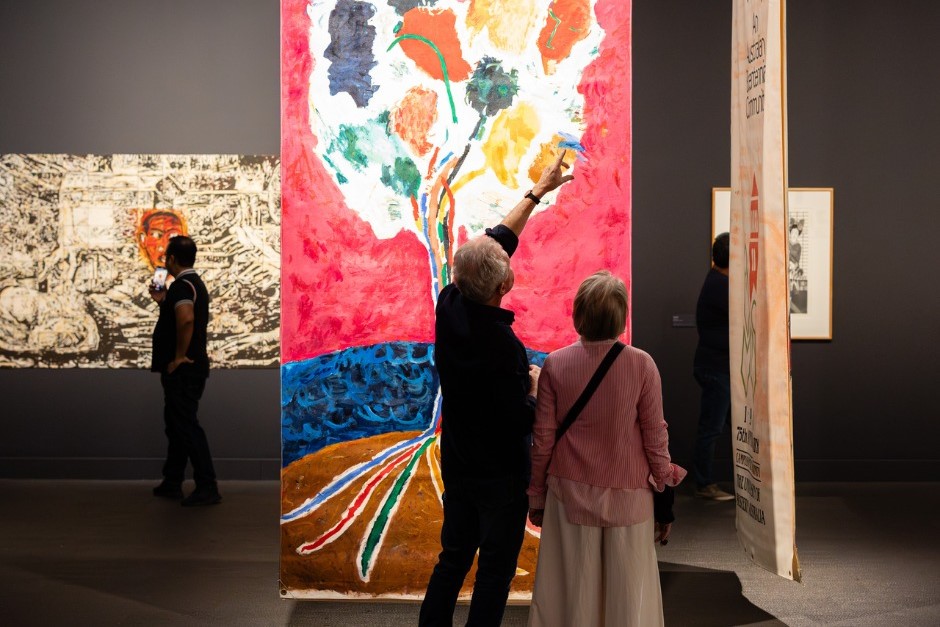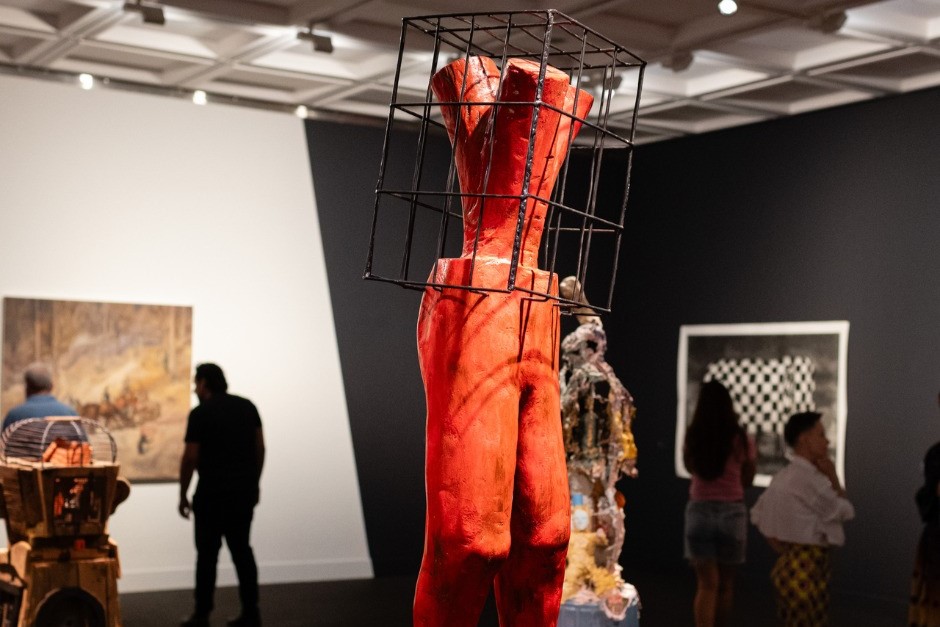



Francis Fukuyama’s The End of History and the Last Man is better known as a meme than an argument committed to prose. More discussed than read, the book is often taken as the apogee of post-cold war hubris; an arrogant and misguided proclamation of the sustainability and longevity of liberal democracy, and a text that has dated poorly against the myriad disruptions and transformations that have occurred since the late 80s.
Sure to surprise readers of the book that made Fukuyama famous is his commitment to the notion of history as a process with a telos, goal, or aim. For Fukuyama, history is not simply a series of significant events that reached its terminus with the fall of the Soviet Union and the triumph of capitalism and liberal democracy, but is instead an overarching and unconscious collective project, a species-wide struggle to discover a mode of politics that is best aligned with our unique species-being. For Fukuyama, then, liberal democracy is not necessarily here to stay, nor is it a utopian system free of problems or crises, but is instead the system best aligned to meet human need—and a system that, once discovered, should be expanded and defended.
While it is fairly straightforward to challenge Fukuyama theoretically—as has been done by numerous scholars in the fields of philosophy, history, political science, and international relations—the difficulty of imagining an end to capitalism or a viable alternative to liberal democracy has proven more difficult. Put differently, even if we know that history has not ended—even in Fukuyama’s intended sense—our collective struggle to coalesce around some kind of preferable alternative to liberal democracy gives the end of history a kind of practical veracity.
Ironically, the conventional attempts to foil Fukuyama’s thesis by appealing to historical ruptures—the rise of authoritarian nationalism, the proliferation of global terrorism, the increasingly unstable character of the global economy, and the threat of the anthropocene—potentially reinforces his central argument. An inability to think other than in terms of discrete historical events reinforces the dominance of liberal democracy as an unavoidable paradigm. As the sociologist Will Davies has argued, ‘history and historians now frequently perform the role to which sociology and sociologists once aspired: to narrate and contextualise the conflicts of the present.’[1] Arguably, the explosive popularity of a kind of history sans historiography—the endless rotation and inspection of the empirical facts that can be found in best selling paperbacks, documentaries, and long form YouTube video essays—adds weight to the thesis that history as the struggle for the new has ended. And so, despite decades of the same jokes at Fukuyama’s expense, liberal democracy remains decaying but immovable, like a ghost image burned into a CRT monitor through prolonged inaction.
Does the field of contemporary art have an analogue? Is there a particular style or mode of artistic activity that holds a relationship to visual culture similar to capitalist liberal democracy’s relationship to political economy? Which is effectively to ask, does contemporary art suffer from a similar practical horizon that delimits our conception of what art is and is for, even if we know theoretically that art could of course be something else? The End of History at Lawrence Wilson Gallery (curated by Gemma Weston) presents us with the opportunity to consider neo-expressionism as just such a horizon.
Although Weston doesn’t use the label neo-expressionism, she speaks in nearly synonymous terms when writing that many of the works in The End of History are ‘boldly emotional, painterly and generally figurative, showing bodies under pressure from transformational forces.’ Such forces include technological changes, and especially the proliferation of mass media entertainment as found in Simon Gever’s Suburb, Rick Vermey’s Anxiety, and Peter Dailey’s Creative Nation; neo-colonialism as reflected in Derek Tang’s Eek!, Julie Dowling’s Blind Justice, and Mia Boe’s Legacy of the Enumerator; and capitalism’s alienating effects, which are rendered unambiguously by Theo Koning’s The industrialist. Although displaying a range of techniques and materials, these works share an engagement with the often darkly transformative effect of the geopolitical crises of the late twentieth-century, and the exhibition provides an overwhelming sense of the deep uncertainty felt by many in the wake of Australia’s then newly commencing economic deregulation and financialisation.
The more recent works such as Emma Buswell’s Once upon a time in… and Jarrad Martyn’s The Plan speak most directly to the end of history as a temporality, and one would be tempted to conceptually reconstruct the exhibition from the perspectives they offer. In the case of Once upon a time in… we find the end of history in the form of nostalgic remembrances of pivotal events that seem to stretch forward without any underlying meaning or ground. Although distinct spatially, and opting for a disorientating simultaneity rather than a linear sequential progression, The Plan’s overlaying of various colonial traces suggests an anti-historical sense of an ever-present now. Despite the thematic resonance of these more recent works, they nevertheless feel somewhat marginal amidst a collection of works much closer in period and style.
As regards these earlier works, one could imagine an unsympathetic viewer rolling their eyes at much on display. The privileging of the figurative over the abstract, the raw and emotional over the measured and conceptual, and the iconographic fixation on televisions, cars, smokestacks, and beleaguered human forms as signs of contemporary alienation could strike the contemporary viewer as overly familiar, if not hackneyed. Again, from the position of the unsympathetic viewer, there is potentially something uninteresting about the clear heavy handedness—in terms of both theme and technique—shared by many of the works in The End of History, an overly candid and committed way of addressing their subject matter that could strike some as more akin to year 12 Perspectives rather than a compelling retrospective.
I would argue that such a view is misguided for a number of reasons. Firstly, there is evidence to suggest that at least some of the neo-expressionisms offered by The End of History are regaining cultural purchase. To provide just one example, Peter Wales’s Chickenman II - the sequel wouldn’t look out of place on a $300 t-shirt sold at Lo-Fi. Many of these works hold an aesthetic family resemblance that is instantly recognisable but hard to pin down, something adjacent to early MTV, Baselitz, Guston, and 1980s Aardman—the phrase Nickelodeon Chagall comes to mind (thanks Sam Beard)—and whether or not this visual language is making a comeback is an open question for trend spotters. What is undeniable is the renewed interest in developing a popular aesthetic vocabulary for discussing this era of art and design, as evinced by the work of groups like the Consumer Aesthetics Research Institute.[2]
Secondly, and to return to my broader argument, it is perhaps the case that neo-expressionism provides us with something like an underlying logic to contemporary art. While few artists would today make paintings or sculptures like those contained in The End of History, many of these works elicit an uncanny because repressed familiarity. Following the argument of critic Raphael Rubinstein, part of what makes neo-expressionism so difficult to critically assess is the sheer extent to which the “genre” or “movement” or “travesty”—or whatever you want to call it—has been expunged from contemporary art discourse. As Rubinstein comments, ‘you don’t have to be a psychoanalyst to have your suspicions aroused when so much effort is expended to suppress an episode and its memory.’[3] For this reason, I can’t help but wonder whether what makes contemporary artists so ready to dismiss neo-expressionists’ works out of hand is the need to foreclose the possibility that the vast majority of art made since the 1980s has been unable to escape its underlying logic, that is, to be concerned with subjectivity under unchanging and impersonal structures.
As the philosopher Alain Badiou notes in the opening to his Logic of Worlds, whether we are dealing with political economy or art, the “contemporary axiom of conviction” is “there are only bodies and languages”.[4] In other words, for decades now there has been a more or less global resignation to the fact that late capitalism is unavoidable, such that the task of the artist is to record the various subjective responses to this troubling fact. Or to quote Badiou, art today is almost completely preoccupied with ‘the manifestness of bodies, of their desiring and machinic life, their intimacy and their nudity, their embraces and their ordeals.’[5]
That is to say, if contemporary art is today underpinned by the logic of neo-expressionism, we shouldn’t expect to see this logic expressed in a mass revival of the kind of gestural figurative painting showcased by The End of History—although, as mentioned, this is not impossible. Instead, such a logic is to be found in the discursive pressure to understand art’s primary task as the expression of our subjective experience of being transformed by structural forces that appear both terrifying and interminable. Such a discourse casts the abstract, cerebral, and universal as suspicious and reorients the production of art to questions of the individual viewpoint or take, and the encounter with art to individual opinion and taste. To quote Anna Kornbluh’s recent text Immediacy, ‘in the current climate though, art renounces its own project of mediation. Directness and literalism are the techniques; immersiveness and surety are the effects.’[6]
Uncannily, on viewing The End of History I found myself sharing the gallery space with a Russian language tour comprised of people connected to various now former Soviet countries. Taking an opportune moment to interrupt their discussion, I asked how the end of history was approached from the East, and whether the sense of melancholy I associated with the term was simply a product of growing up in the “victorious” capitalist West. The responses I received were various versions of “it depends”. For some, I was told, the end of the Soviet Union was a great thing, for others it was a disaster, and it is difficult to speculate beyond one’s own experience. Although this was potentially a polite way to get me to piss off so the tour group could go back to enjoying the exhibition, these responses perfectly embody the difficulty of thinking historically about art other than through the prism of trivia. At the end of history, then, it seems we are left alone to make sense of the ruptures around us, struggling to articulate ourselves other than through tales of individual success or misfortune.
Such a dilemma is, I would argue, central to The End of History and what makes the exhibition much more than an opportunity to refamiliarise oneself with a range of singular and imaginative pieces. As such, The End of History is not only an impressive survey of works from an era that should be revisited and reappraised, but is also a thought provoking meditation on a cultural and political condition that we would be foolish to think we had overcome, even if it feels aesthetically foreign to us today.
Lawrence Wilson Art Gallery, The End of History, 18 May – 17 August 2024.
Footnotes:
1. William Davies, “Destination unknown”, London Review of Books, June 9, 2022, https://www.artnews.com/art-in-america/features/neo-expressionism-not-remembered-62966/
2. https://cari.institute/
3. Raphael Rubenstein, “Neo-Expressionism Not Remembered”, Art in America, January 31, 2013, https://www.artnews.com/art-in-america/features/neo-expressionism-not-remembered-62966/
4. Alain Badiou, Logic of Worlds: Being and Event II, trans. Alberto Toscano, Bloomsbury, 2009.
5. Alain Badiou, Logic of Worlds: Being and Event II, trans. Alberto Toscano, Bloomsbury, 2009.
6. Anna Kornbluh, Immediacy, or The Style of Too Late Capitalism, Verso, 2024.
Images: Opening night, The End of Histor, Lawrence Wilson Art Gallery, 2024, ILLKA K Photography.
Sure to surprise readers of the book that made Fukuyama famous is his commitment to the notion of history as a process with a telos, goal, or aim. For Fukuyama, history is not simply a series of significant events that reached its terminus with the fall of the Soviet Union and the triumph of capitalism and liberal democracy, but is instead an overarching and unconscious collective project, a species-wide struggle to discover a mode of politics that is best aligned with our unique species-being. For Fukuyama, then, liberal democracy is not necessarily here to stay, nor is it a utopian system free of problems or crises, but is instead the system best aligned to meet human need—and a system that, once discovered, should be expanded and defended.
While it is fairly straightforward to challenge Fukuyama theoretically—as has been done by numerous scholars in the fields of philosophy, history, political science, and international relations—the difficulty of imagining an end to capitalism or a viable alternative to liberal democracy has proven more difficult. Put differently, even if we know that history has not ended—even in Fukuyama’s intended sense—our collective struggle to coalesce around some kind of preferable alternative to liberal democracy gives the end of history a kind of practical veracity.
Ironically, the conventional attempts to foil Fukuyama’s thesis by appealing to historical ruptures—the rise of authoritarian nationalism, the proliferation of global terrorism, the increasingly unstable character of the global economy, and the threat of the anthropocene—potentially reinforces his central argument. An inability to think other than in terms of discrete historical events reinforces the dominance of liberal democracy as an unavoidable paradigm. As the sociologist Will Davies has argued, ‘history and historians now frequently perform the role to which sociology and sociologists once aspired: to narrate and contextualise the conflicts of the present.’[1] Arguably, the explosive popularity of a kind of history sans historiography—the endless rotation and inspection of the empirical facts that can be found in best selling paperbacks, documentaries, and long form YouTube video essays—adds weight to the thesis that history as the struggle for the new has ended. And so, despite decades of the same jokes at Fukuyama’s expense, liberal democracy remains decaying but immovable, like a ghost image burned into a CRT monitor through prolonged inaction.
Does the field of contemporary art have an analogue? Is there a particular style or mode of artistic activity that holds a relationship to visual culture similar to capitalist liberal democracy’s relationship to political economy? Which is effectively to ask, does contemporary art suffer from a similar practical horizon that delimits our conception of what art is and is for, even if we know theoretically that art could of course be something else? The End of History at Lawrence Wilson Gallery (curated by Gemma Weston) presents us with the opportunity to consider neo-expressionism as just such a horizon.
Although Weston doesn’t use the label neo-expressionism, she speaks in nearly synonymous terms when writing that many of the works in The End of History are ‘boldly emotional, painterly and generally figurative, showing bodies under pressure from transformational forces.’ Such forces include technological changes, and especially the proliferation of mass media entertainment as found in Simon Gever’s Suburb, Rick Vermey’s Anxiety, and Peter Dailey’s Creative Nation; neo-colonialism as reflected in Derek Tang’s Eek!, Julie Dowling’s Blind Justice, and Mia Boe’s Legacy of the Enumerator; and capitalism’s alienating effects, which are rendered unambiguously by Theo Koning’s The industrialist. Although displaying a range of techniques and materials, these works share an engagement with the often darkly transformative effect of the geopolitical crises of the late twentieth-century, and the exhibition provides an overwhelming sense of the deep uncertainty felt by many in the wake of Australia’s then newly commencing economic deregulation and financialisation.
The more recent works such as Emma Buswell’s Once upon a time in… and Jarrad Martyn’s The Plan speak most directly to the end of history as a temporality, and one would be tempted to conceptually reconstruct the exhibition from the perspectives they offer. In the case of Once upon a time in… we find the end of history in the form of nostalgic remembrances of pivotal events that seem to stretch forward without any underlying meaning or ground. Although distinct spatially, and opting for a disorientating simultaneity rather than a linear sequential progression, The Plan’s overlaying of various colonial traces suggests an anti-historical sense of an ever-present now. Despite the thematic resonance of these more recent works, they nevertheless feel somewhat marginal amidst a collection of works much closer in period and style.
As regards these earlier works, one could imagine an unsympathetic viewer rolling their eyes at much on display. The privileging of the figurative over the abstract, the raw and emotional over the measured and conceptual, and the iconographic fixation on televisions, cars, smokestacks, and beleaguered human forms as signs of contemporary alienation could strike the contemporary viewer as overly familiar, if not hackneyed. Again, from the position of the unsympathetic viewer, there is potentially something uninteresting about the clear heavy handedness—in terms of both theme and technique—shared by many of the works in The End of History, an overly candid and committed way of addressing their subject matter that could strike some as more akin to year 12 Perspectives rather than a compelling retrospective.
I would argue that such a view is misguided for a number of reasons. Firstly, there is evidence to suggest that at least some of the neo-expressionisms offered by The End of History are regaining cultural purchase. To provide just one example, Peter Wales’s Chickenman II - the sequel wouldn’t look out of place on a $300 t-shirt sold at Lo-Fi. Many of these works hold an aesthetic family resemblance that is instantly recognisable but hard to pin down, something adjacent to early MTV, Baselitz, Guston, and 1980s Aardman—the phrase Nickelodeon Chagall comes to mind (thanks Sam Beard)—and whether or not this visual language is making a comeback is an open question for trend spotters. What is undeniable is the renewed interest in developing a popular aesthetic vocabulary for discussing this era of art and design, as evinced by the work of groups like the Consumer Aesthetics Research Institute.[2]
Secondly, and to return to my broader argument, it is perhaps the case that neo-expressionism provides us with something like an underlying logic to contemporary art. While few artists would today make paintings or sculptures like those contained in The End of History, many of these works elicit an uncanny because repressed familiarity. Following the argument of critic Raphael Rubinstein, part of what makes neo-expressionism so difficult to critically assess is the sheer extent to which the “genre” or “movement” or “travesty”—or whatever you want to call it—has been expunged from contemporary art discourse. As Rubinstein comments, ‘you don’t have to be a psychoanalyst to have your suspicions aroused when so much effort is expended to suppress an episode and its memory.’[3] For this reason, I can’t help but wonder whether what makes contemporary artists so ready to dismiss neo-expressionists’ works out of hand is the need to foreclose the possibility that the vast majority of art made since the 1980s has been unable to escape its underlying logic, that is, to be concerned with subjectivity under unchanging and impersonal structures.
As the philosopher Alain Badiou notes in the opening to his Logic of Worlds, whether we are dealing with political economy or art, the “contemporary axiom of conviction” is “there are only bodies and languages”.[4] In other words, for decades now there has been a more or less global resignation to the fact that late capitalism is unavoidable, such that the task of the artist is to record the various subjective responses to this troubling fact. Or to quote Badiou, art today is almost completely preoccupied with ‘the manifestness of bodies, of their desiring and machinic life, their intimacy and their nudity, their embraces and their ordeals.’[5]
That is to say, if contemporary art is today underpinned by the logic of neo-expressionism, we shouldn’t expect to see this logic expressed in a mass revival of the kind of gestural figurative painting showcased by The End of History—although, as mentioned, this is not impossible. Instead, such a logic is to be found in the discursive pressure to understand art’s primary task as the expression of our subjective experience of being transformed by structural forces that appear both terrifying and interminable. Such a discourse casts the abstract, cerebral, and universal as suspicious and reorients the production of art to questions of the individual viewpoint or take, and the encounter with art to individual opinion and taste. To quote Anna Kornbluh’s recent text Immediacy, ‘in the current climate though, art renounces its own project of mediation. Directness and literalism are the techniques; immersiveness and surety are the effects.’[6]
Uncannily, on viewing The End of History I found myself sharing the gallery space with a Russian language tour comprised of people connected to various now former Soviet countries. Taking an opportune moment to interrupt their discussion, I asked how the end of history was approached from the East, and whether the sense of melancholy I associated with the term was simply a product of growing up in the “victorious” capitalist West. The responses I received were various versions of “it depends”. For some, I was told, the end of the Soviet Union was a great thing, for others it was a disaster, and it is difficult to speculate beyond one’s own experience. Although this was potentially a polite way to get me to piss off so the tour group could go back to enjoying the exhibition, these responses perfectly embody the difficulty of thinking historically about art other than through the prism of trivia. At the end of history, then, it seems we are left alone to make sense of the ruptures around us, struggling to articulate ourselves other than through tales of individual success or misfortune.
Such a dilemma is, I would argue, central to The End of History and what makes the exhibition much more than an opportunity to refamiliarise oneself with a range of singular and imaginative pieces. As such, The End of History is not only an impressive survey of works from an era that should be revisited and reappraised, but is also a thought provoking meditation on a cultural and political condition that we would be foolish to think we had overcome, even if it feels aesthetically foreign to us today.
Lawrence Wilson Art Gallery, The End of History, 18 May – 17 August 2024.
Footnotes:
1. William Davies, “Destination unknown”, London Review of Books, June 9, 2022, https://www.artnews.com/art-in-america/features/neo-expressionism-not-remembered-62966/
2. https://cari.institute/
3. Raphael Rubenstein, “Neo-Expressionism Not Remembered”, Art in America, January 31, 2013, https://www.artnews.com/art-in-america/features/neo-expressionism-not-remembered-62966/
4. Alain Badiou, Logic of Worlds: Being and Event II, trans. Alberto Toscano, Bloomsbury, 2009.
5. Alain Badiou, Logic of Worlds: Being and Event II, trans. Alberto Toscano, Bloomsbury, 2009.
6. Anna Kornbluh, Immediacy, or The Style of Too Late Capitalism, Verso, 2024.
Images: Opening night, The End of Histor, Lawrence Wilson Art Gallery, 2024, ILLKA K Photography.